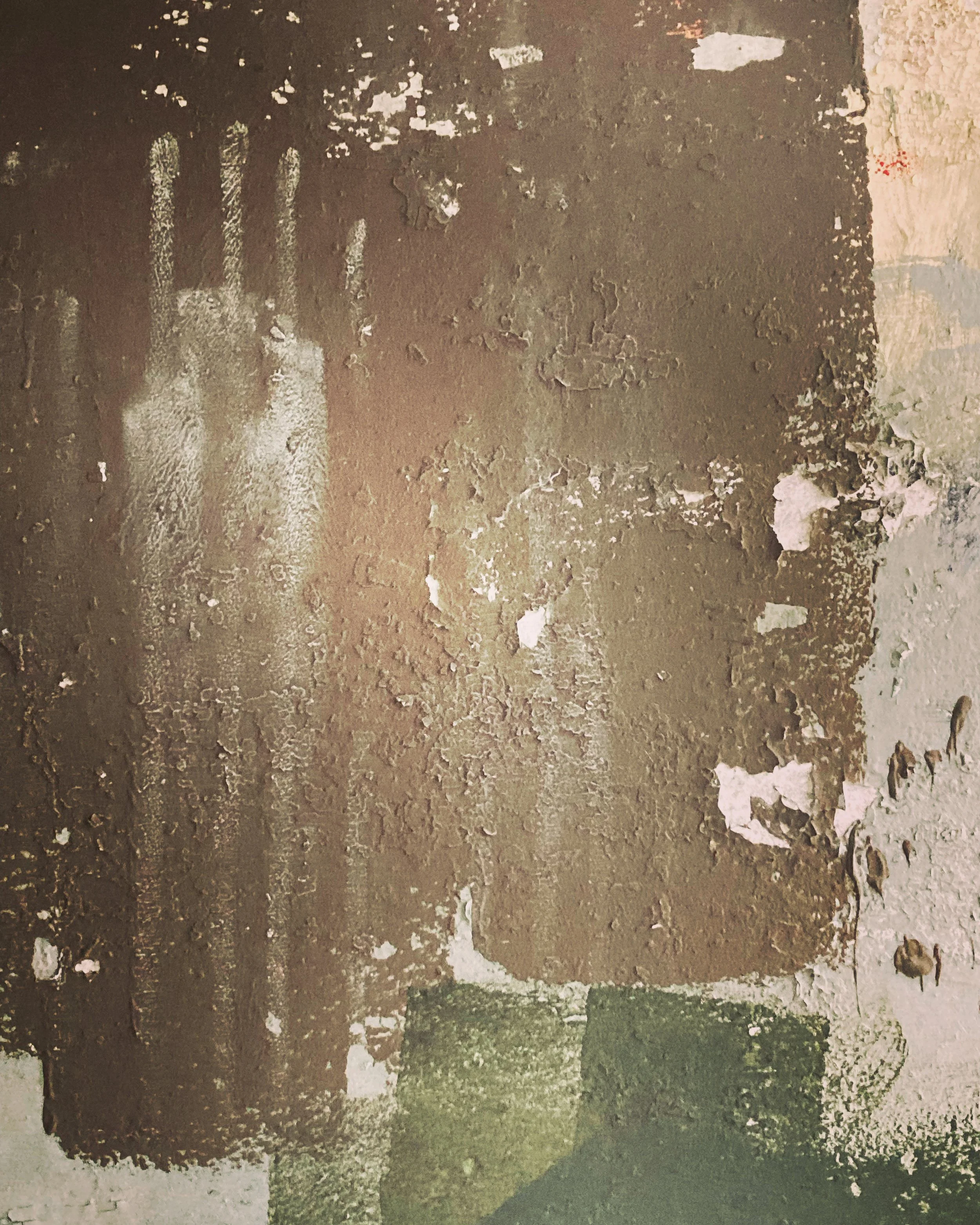Mandarins
by Shin Yu Pai
Shin Yu Pai, Hand prints, Fort Worden, digital photograph, 2021. Courtesy of the artist.
MANDARINS
SHIN YU PAI | AUG 2022 | ISSUE 17
history often erases those
who were secondary
to the white narrative
which explains why
the gun battery at the remote
Washington harbor defense
outpost is named after
a long dead Texas Ranger —
dig around in the public
record and you’ll find
a building called the Zee Tai
which was first rented by
immigrant merchants from
Canton, who could lease, but
never own; the same was true
of the bachelors who cultivated
the land along the Qatay Lagoon,
Chinese truck farmers who sold
vegetables door-to-door,
cash crops delivered by wagon
as far as Seattle, some like
to say that their expulsion
here was largely economic,
the Chinese weren’t beaten
or lynched, their buildings
weren’t burned; instead,
they were ostracized until
a quarter of the population
up and left, and today their
contributions are remembered
with a park plaque marking
the place where there are
no more Chinese gardens; this is
not so different than the tiny town
where I grew up in the Inland
Empire, where the only
reference point I had for
anything Asian was the name
of the street where I grew up
“Mandarin Way” in Highgrove
a stone’s throw from orange
groves, we never stopped to ask
why clementines were also
known as Mandarins, or
my favorite summer cultivar
at the U-pick orchards
of my youth were “Bing”
which you can bet weren’t
named after Bing Crosby,
when my own hometown
installed a brightly colored
pavilion in 1986, a structure,
we weren’t taught to know
about it in school, I grew up
believing it was a gift from
some sister city since the craftsmen
traveled all the way from Taiwan
to build the memorial that was
in fact, a marker of Riverside’s
first Chinatown which stood
just blocks away, a district where
immigrants had been forced out
after the local newspaper mounted
a campaign to limit the borders
of Chinatown so that the publisher could
expand his own business; they built
themselves a new enclave that was razed
to the ground in 1974, one year
before I was born; I think about
how a more fitting monument
to the dead, which would have
been a tougher administrative pass
might have been a sculpture
of an actual person, like “George”
Wong Ho Leun, the last living
resident of Riverside’s Chinatown
who outlived his neighbors
by thirty years, the last holdout;
years after his abandoned acreage
was declared an archaeological find
they would name it Wong Ho Leun,
while the City Council would create
a short street to connect Palm Avenue
and Pine Street near Chinatown
which they named “Wong Way”
because they liked the sound of it
delighting in its racist trope,
one can imagine the faces
of those who occupied the seats of power,
“Wong” which sounds like “Wrong”
wronged by history, which rewrites
itself now in the renaming
of “Chink’s Peak”, Idaho
to Chinese Peak, Mestaa'ėhehe
Mountain which was formerly
“Squaw Peak” these names that reclaim
the narrative landscape make modern
memorials, like Qatay from the Chemakum,
meaning to “carry” as the natives
once portaged their dugouts overland,
as we descendants now lift up
the arks of other embodied histories



Shin Yu Pai is an award-winning writer and visual artist based in Seattle. She is a 2022 Artist Trust Fellow and was shortlisted for a 2014 Stranger Genius in Literature. Shin Yu is the author of eleven books of poetry, including most recently Virga (Empty Bowl, 2021). From 2015 to 2017, she served as the fourth Poet Laureate of the City of Redmond. Her essays and nonfiction writing have appeared in Atlas Obscura, NY Times, Tricycle, YES! Magazine, The Rumpus, Seattle Met, Zocalo Public Square, Gastronomica, City Arts, The Stranger, South Seattle Emerald, , International Examiner, Ballard News-Tribune, Seattle’s Child, Seattle Globalist, and ParentMap. Shin Yu’s work has appeared in publications throughout the U.S., Japan, China, Taiwan, The United Kingdom, and Canada. She is host, writer, and producer of The Blue Suit, a podcast for KUOW, Seattle’s NPR affiliate. She is represented by Tyler Tsay at The Speakeasy Project.
